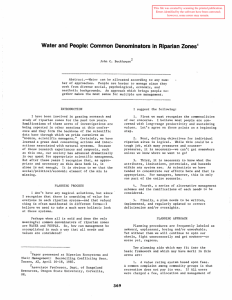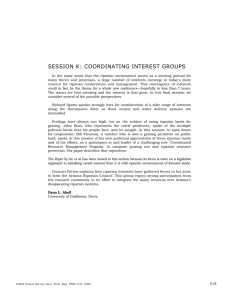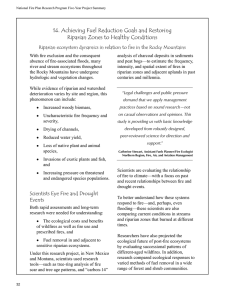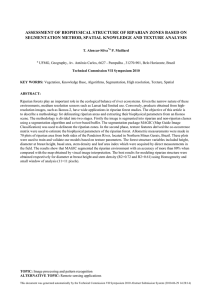SESSION A: CHANNEL DYNAMICS AND RIPARIAN SYSTEMS
advertisement
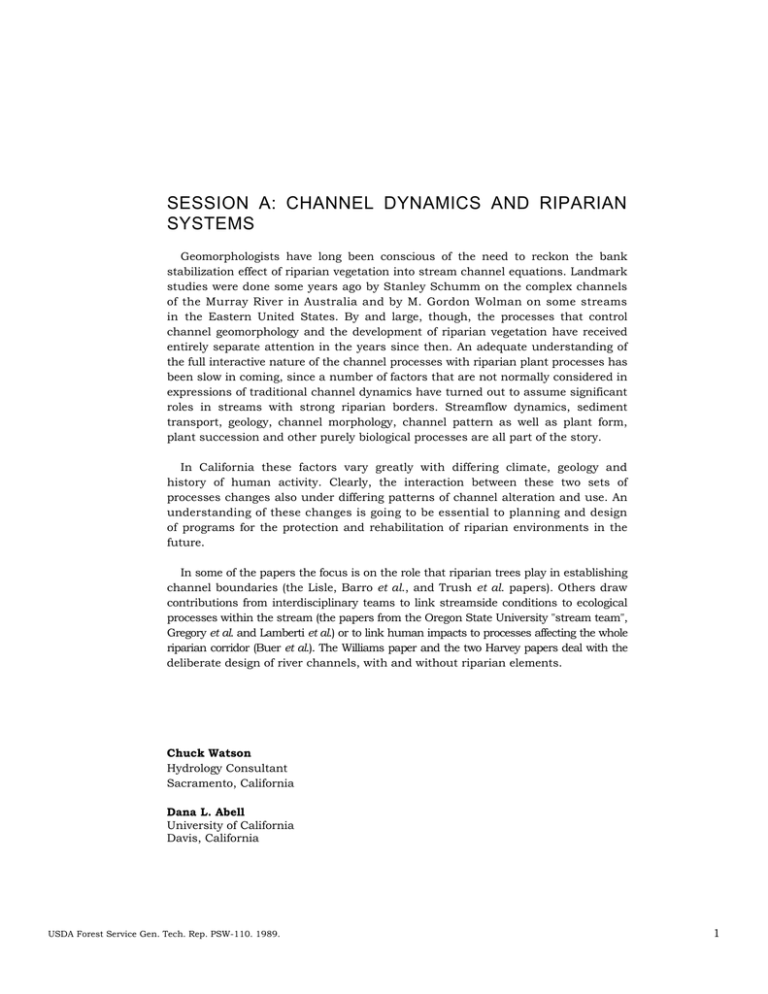
SESSION A: CHANNEL DYNAMICS AND RIPARIAN SYSTEMS Geomorphologists have long been conscious of the need to reckon the bank stabilization effect of riparian vegetation into stream channel equations. Landmark studies were done some years ago by Stanley Schumm on the complex channels of the Murray River in Australia and by M. Gordon Wolman on some streams in the Eastern United States. By and large, though, the processes that control channel geomorphology and the development of riparian vegetation have received entirely separate attention in the years since then. An adequate understanding of the full interactive nature of the channel processes with riparian plant processes has been slow in coming, since a number of factors that are not normally considered in expressions of traditional channel dynamics have turned out to assume significant roles in streams with strong riparian borders. Streamflow dynamics, sediment transport, geology, channel morphology, channel pattern as well as plant form, plant succession and other purely biological processes are all part of the story. In California these factors vary greatly with differing climate, geology and history of human activity. Clearly, the interaction between these two sets of processes changes also under differing patterns of channel alteration and use. An understanding of these changes is going to be essential to planning and design of programs for the protection and rehabilitation of riparian environments in the future. In some of the papers the focus is on the role that riparian trees play in establishing channel boundaries (the Lisle, Barro et al., and Trush et al. papers). Others draw contributions from interdisciplinary teams to link streamside conditions to ecological processes within the stream (the papers from the Oregon State University "stream team", Gregory et al. and Lamberti et al.) or to link human impacts to processes affecting the whole riparian corridor (Buer et al.). The Williams paper and the two Harvey papers deal with the deliberate design of river channels, with and without riparian elements. Chuck Watson Hydrology Consultant Sacramento, California Dana L. Abell University of California Davis, California USDA Forest Service Gen. Tech. Rep. PSW-110. 1989. 1



